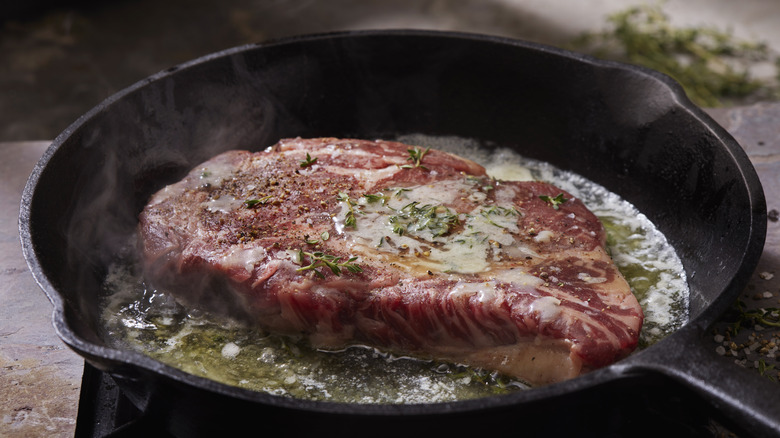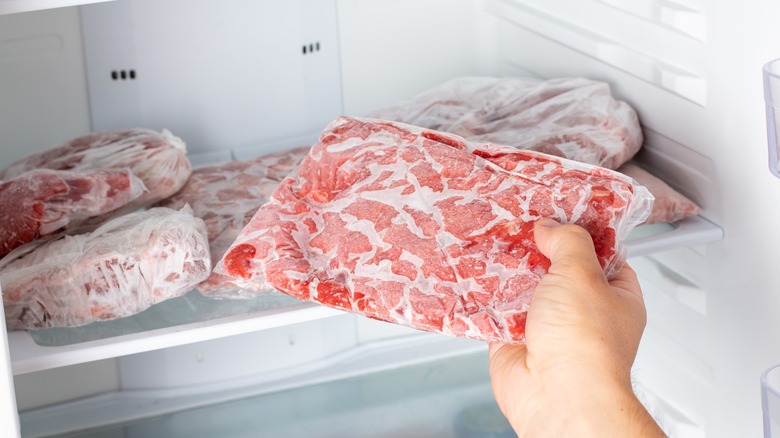A Temperature Pro-Tip To Cook Beef Evenly Every Time
If you've ever had difficulty cooking your steak just right but can't figure out what you're doing wrong, consider this: You need to let your steak come to room temperature before it hits the pan. In fact, this doesn't just apply to steak: You'll generally want to avoid cooking other types of beef (for example, burgers) when they're still cold or especially frozen if you're hoping to cook them precisely, such as if you want a crisp exterior but a rosy pink center.
Letting your steak come to room temperature is sometimes called "tempering," and it makes for better cooking for a couple of reasons. Firstly, a steak that's still cold will need longer on the grill or in the pan in order for its center to hit the right (and safe) temperature for serving. But that longer cooking time means the outside of the steak — which is in direct contact with the heat — may end up getting overcooked as a consequence of the extra time needed to get the center just right. If you want the outside perfectly cooked, you'll run the risk of the center being underdone.
The other issue is that the cold steak will lower the temperature of your cooking pan. This is a problem because for searing, you'll generally want a super-high temperature in order to get that delicious caramelization. The cold meat will lower that temperature (although it'll obviously heat back up), making it at least a little trickier to get a perfect caramelized char.
Is there a food safety worry here?
If you're a cook who worries about hygiene, the idea of letting your beef sit out at room temperature for 30 minutes to an hour (the recommended wait time for a steak that's coming from the fridge) might seem a little scary, or like a recipe for food poisoning. This isn't something you need to worry about: After all, the cooking process should bring the meat to a safe temperature that will kill off any pathogens. It may even be safer than cooking a steak straight from the fridge, as this will run a risk of having an undercooked center.
This is more of a concern if you're cooking frozen beef rather than beef from the fridge, as there's a much larger temperature gap between the frozen meat and the safe serving temperature (which is around 145 degrees Fahrenheit, although it varies slightly depending on the meat). While the USDA does consider it safe to cook meat that hasn't been defrosted, you'll need to make the cooking time around 50% longer. That's probably fine if you're making something like a stew where the meat will be fully cooked over a fairly long time anyway, but it's going to make it very difficult to get precise or even results on something like a steak or burger.

